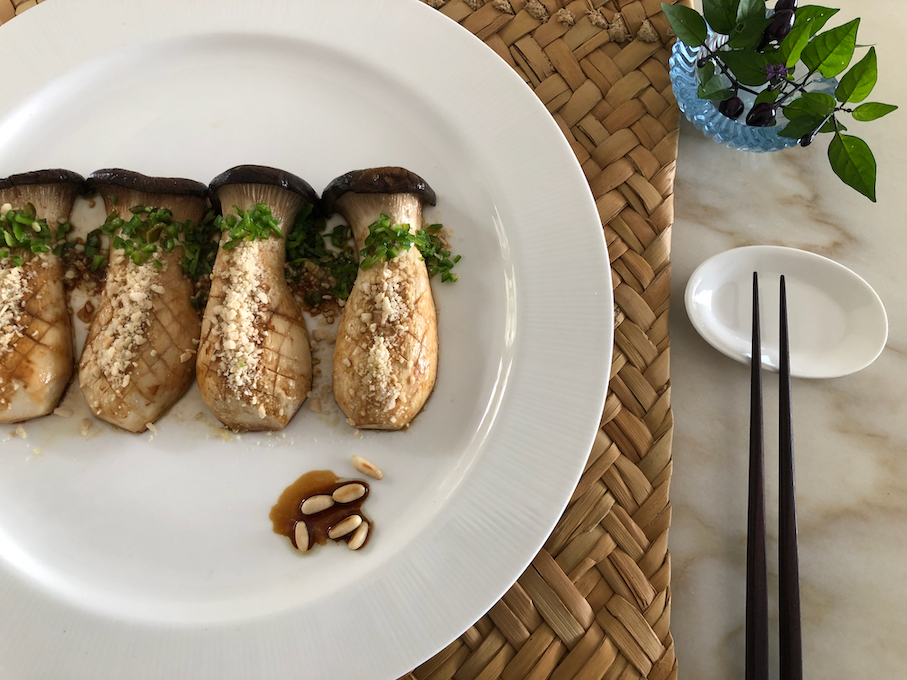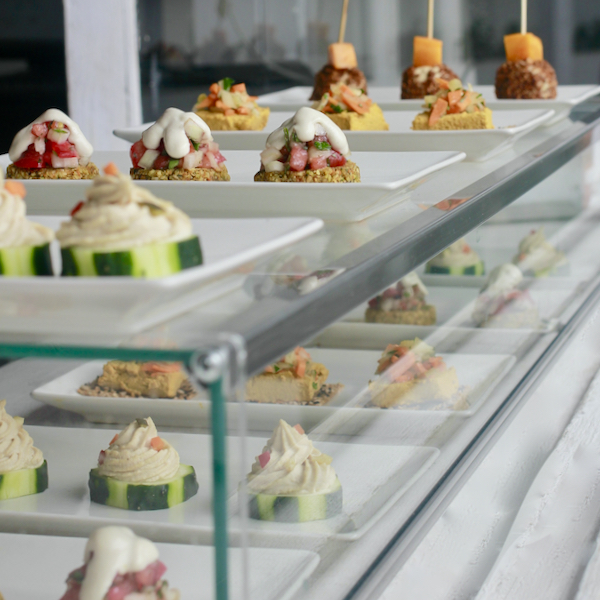
How can I initiate into Zen Cooking? Is it required to practice Buddhism to cook Zen dishes? Is it true that there are prohibited ingredients in Buddhism? These are some of the questions we ask when approaching Zen cooking. To provide an answer we bring you three recipes (the last one, a formidable King Oyster Mushrooms with Pine Nuts dish) and the recommendation of the first book published in English on Zen Cooking in Korean Buddhist temples.
In an interview with the Buddhist nun Jeong Kwan (a celebrity after her appearance in the Netflix series Chef’s Table) she was asked why vegetables of the Allium genus, that is: onions, garlic, leeks, chives, shallots and wild garlic were excluded from Zen Cooking. Her answer is clear:
“Those five spices are sources of spiritual energy, but too much of that energy will prevent a monk’s spirit from achieving a state of calmness. This is a distraction to meditation.”
With her words, Jeong Kwan is expressing the needs of a community living in a Buddhist temple. The practice of meditation determines the temple’s schedule and it can take up an average of eight hours of meditation per day. The typical austerity of Zen monasteries is also reflected in its cuisine although, as we are seeing, without sacrificing its culinary quality, its healthy character and visual harmony in its dishes. It is interesting to notice that not all of us live in a monastery or temple and, therefore, our lifestyle has other needs.

Buddhist nun Jeong Kwan
Buddhism promotes the adaptation of its precepts to life outside monasteries. The message is clear: find your personal balance by applying aspects of Zen philosophy to your daily life. Zen cooking is based on a set of principles – vegetarianism, flexibility, etc. (see sidebar) – which, when well understood, allow us to adapt Zen Cooking to our way of life and enjoy its benefits.
As an initiation we propose three recipes accompanied by a summary of the principles of Zen Cooking, tips and photographs. Our advice? Carefully read the texts that accompany the recipes and… start cooking!

Modern recipe based on Japanese Shōjin Ryori techniques. Shōjin zucchini consist of small packets of zucchini sheets stuffed with vegetables and sided by a rich sesame cream.

Traditional dish from the cuisine of the Zen temples in Japan. Its original name is Nasu Rikyo-ni associated with the values of compassion, creativity and self-esteem. Eggplants with a creamy texture combine with the al dente point of green beans and the aromatic bite of shiitake mushrooms.

King Oyster Mushrooms with pine nuts
Our adaptation of the Korean Oyster mushrooms (Pleurotus eryngii) recipe by Wookwan, a Buddhist nun and author of the book Korean Temple Food. It is an ideal dish to start in Zen Cooking due to its simplicity. The mushrooms are blanched and then grilled until golden. They are accompanied by a tamari and pine nut sauce and decorated with a chopped green pepper or chili. The result is a simple and elegant dish in which the fragrance of mushrooms combines with tamari’s smoky aromas of and the unique flavor of toasted pine nuts. A dish with personality that, if you close your eyes when tasting it, takes you on a walk through your favorite forest.
- 3 King Oyster Mushrooms
- 1 Green chilli, seeded and finely minced
- 1 tbsp Pine nuts, finely minced
- 2 tbsp Vegetable oil
- 2 tbsp Tamari
- 1 tbsp Rice, maple or agave syrup.
- Mix vegetable oil, soy sauce and syrup in a small bowl.
- Cut the king oyster mushrooms into halves, lengthwise.
- Score the outside (not the cut sides) creating a grid (see picture).
- Blanch mushrooms in salted boiling water, then shock in iced water. Drain and dry well.
- Toast the pine nuts in a pan on a low fire until golden.
- Grill the mushrooms with one tbs of oil (you can use a non-stick pan) until the mushrooms are browned.
- Add the sauce to the mushrooms, cook until sauce thickens.
- Sprinkle minced chilli and pine nuts (minced and whole) on top.











This wonderful dish turned out to be a perfect way to welcome in the new year. The simplicity of preparation combined nicely with the distinctive textures, aromas, and flavors. Since pine nuts appear to be scarce and expensive, we substituted them with walnuts. This may not have been an ideal path, but at least it was a practical adaptation to local conditions and in some way reflected the concerns of the community. This dish particularly aligned with clarity, natural harmony, and just enough. Looking forward to more contemplative cooking and amazing Zen dishes for 2023!
Many thanks for your beautiful comment! Praises go for Wookwan, the recipe’s author. And yes, walnuts (even almonds) will do perfectly. It is far better to use local, fresh ingredients than get stressed trying to obtain non-easily available ingredients. Good recipes are usually crafted using local ingredients. Substitutions are common in daily cooking and if you don’t go too far (smile) it is the essence of home cooking. More Zen recipes to follow!